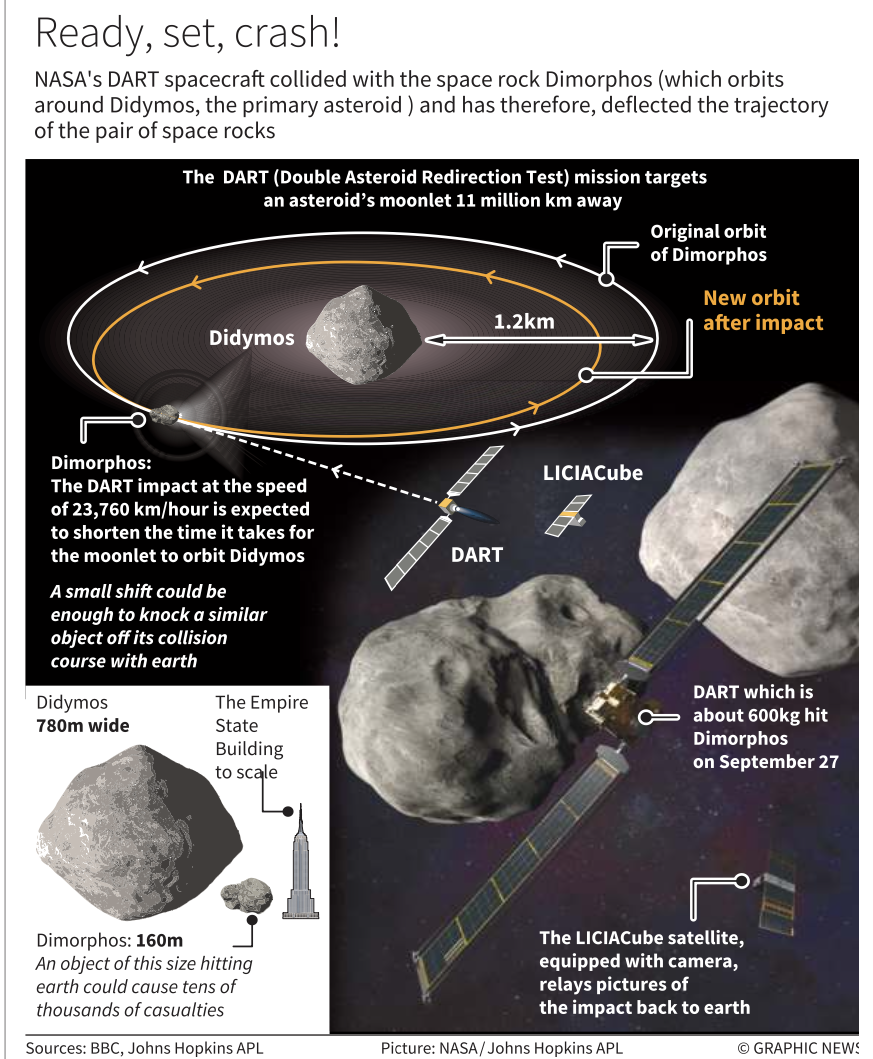ForumIAS announcing GS Foundation Program for UPSC CSE 2025-26 from 27th May. Click Here for more information.
Contents
Source: The post is based on the article “Explained | The NASA spacecraft-asteroid collision” published in The Hindu on 28th September 2022
What is the News?
NASA’s DART (Double Asteroid Redirection Test) spacecraft has collided with the asteroid Dimorphous.
What are Asteroids?
Asteroids are small, rocky objects that orbit the Sun. Although asteroids orbit the Sun like planets, they are much smaller than planets.
There are lots of asteroids in our solar system. Most of them are located in the main asteroid belt – a region between the orbits of Mars and Jupiter.
What is DART Spacecraft?

How did NASA undertook this mission?
NASA undertook the ‘kick’ technique. Compared to the massive Dimorphos, DART is a tiny Goliath.
Yet crashing at a breakneck speed of 23,760 kilometres per hour, the momentum is adequate to slash the angular momentum of Dimorphos, making it speed up and move closer to Didymos.
All of these reduce the orbital period and the time taken for the moonlet to go around the primary asteroid. The pair’s trajectory is thus deflected as the net result of these dynamics.
Consider it like this: a fast-moving moped slamming into a truck is sure to undergo a massive crash and burn, yet will veer the massive truck a bit. This is the essence of the ‘kick’ technique.
What has been the impact assessment?
The DART craft carried a high-resolution DRACO (Didymos Reconnaissance and Asteroid Camera for Optical navigation) camera to observe the collision and its consequences. The close-up images until its fatal crash are being analyzed.
Are there other countries launching similar missions?
China is set to deflect a 40 m diameter earth-crossing asteroid called 2020 PN1 sometime in 2026.




